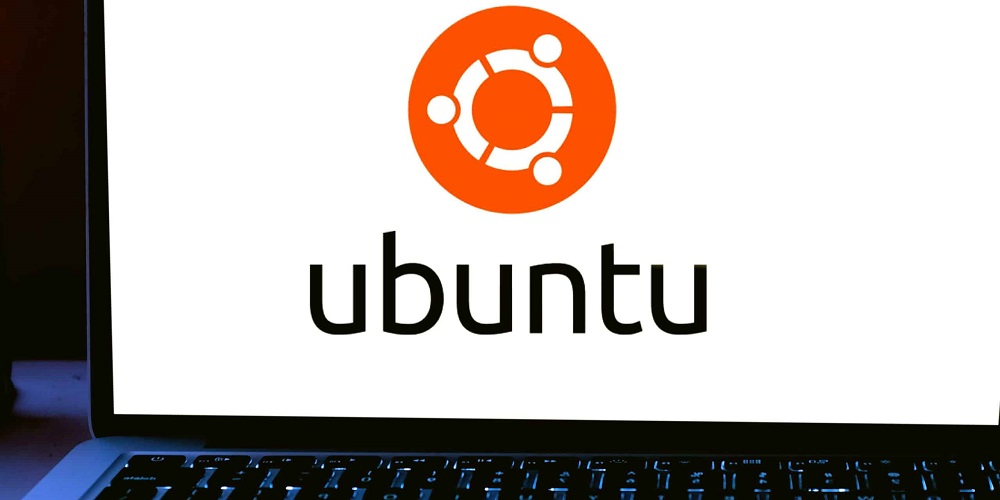
Top Ubuntu Alternatives To Try: Let’s begin by familiarising ourselves with something familiar but a little off-topic! Have you ever gotten Linux and Ubuntu words confused? Do you believe that both are identical? Have you ever used Google to determine the distinction between Linux and Ubuntu? Or do you employ each phrase interchangeably? Relax. We are not here to test your operating systems expertise, but we want to ensure that our readers who use the Internet to further their technical knowledge are familiar with the fundamental concepts.
Linux is an operating system, while Ubuntu is a distribution of the Linux OS family to avoid the fundamental technical jargon. Ubuntu, a distribution based on Debian, is the most popular operating system under the Linux umbrella. However, several Ubuntu alternatives meet comparable standards in addition to other distros. Now, to find alternatives to Ubuntu, we may use two distinct approaches: first, a Debian-based Linux distribution, of which Ubuntu is a part, and second, a distribution-specific strategy.
The Best Ubuntu Alternatives
Let’s have a look at the Best Ubuntu Alternatives.
1. Raspbian
It is a PC working framework for Raspberry Pi based on Debian. Raspbian’s primary desktop environment as of the most recent upgrade is PIXEL, where PI->Pi Enhanced X->Xwindows E->Environment, L->Lightweight. The distribution is accompanied by a free copy of the PC variable-based mathematics program Mathematica. It also includes a version of Minecraft called Minecraft Pi and, as of the most current release, a Pi-optimized version of Chromium.
The Raspberry Pi Foundation now distributes it as the basic operating system for the family of Raspberry Pi single-board computers. Mike Thompson and Peter Green created Raspbian as a separate enterprise. The working framework is rapidly advancing and is being significantly enhanced for its line’s low-execution CPUs.
2. Linux Mint
It provides complete out-of-the-box support for sight and hearing by incorporating commercial software and various free and open source applications. In addition, Linux Mint efficiently develops code for its operational framework. Most advancement is in Python, and the source code is available on GitHub.
Linux Mint mostly incorporates free and open source programming, with exceptions for proprietary programming like MP3, DVD, and Adobe Flash. Linux Mint’s consideration of exclusive programming is peculiar; many Linux distributions prohibit exclusive programming by default since a shared purpose for several Linux distributions is to adhere to free and open source programming. It is accessible for browsing in many desktop environments, including the default Cinnamon desktop, APT, MATE, and KDE.
Linux Mint has a broad selection of preinstalled software, such as VLC player, Firefox, LibreOffice, etc. It allows organizing ports to be closed via its firewall, with redid port option accessible. Cinnamon and MATE, the default Linux Mint desktop environments, support several languages. It may also run various Microsoft Windows-specific applications using the Wine Windows compatibility layer programming for Linux or virtualization programs such as VMware or Kernel-based Virtual Machine.
3. Devuan
Devuan, released in November 2014, is a derivative of the Debian Linux distro, using a monolithic Linux kernel. Due to the project’s adoption of the system as the default init replacement, the Debian 8 Jessie release has generated controversy among Debian developers and clients. Its primary purpose is to provide transportation without the system init daemon installed by default.
Devuan has a package repository that mirrors Debian’s upstream development, with local modifications made only when expected to eliminate system issues or safeguard the original technique. Modified packages include policy kits. Devuan should function identically to the corresponding Debian release. Devuan does not include the system in its archives but retains libsystemd0 until all conditions have been removed.
4. Steam OS
SteamOS is a Debian-based Linux working framework developed by Valve Corporation. It is the core working framework for the Steam Machine gaming console. The operational framework is open source; working clients can extend or modify the source code. SteamOS is primarily intended for playing video games away from a PC by giving a console-like experience using standard PC hardware that can connect directly to a TV. In addition, it can run Linux-specific games created from the Steam store locally. Clients can also stream games from their Windows, Mac, or Linux PCs to a SteamOS PC, which has the same family sharing and restrictions as Steam on the desktop.
Even though the operating system does not yet support streaming services, Valve is discussing with Spotify and Netflix to add these features to SteamOS. In contrast, Steam’s accessible store provides access to full-length films produced by film studios. Locally, the operating system supports Nvidia, Intel, and AMD rendering processors.
5. LinuxBBQ
LinuxBBQ is a desktop-focused operating system based on the Sid-codenamed branch of Debian. Its name is an interesting blend of Linux and barbeque (grill). On top of the concept of a grill as a benevolent assembly, LinuxBBQ has constructed its group ideals, such as the free work frame. Sid, the most cutting-edge branch of Debian, is used; there is a hand-crafted collection of devices and scripts to aid with various tasks, and a lightweight program is being created in-house.
The most noteworthy feature of LinuxBBQ is “Roast Your Own.” This enables the client to start with a LinuxBBQ Base Edition, roll out enhancements by adding specific applications, and then make a preview of the framework and convert it into a bootable ISO file.
To compare exposure experience, investigate Ubuntu’s alternatives in other Linux distributions.
1. Fedora
Fedora (formerly referred to as Fedora Core) is a framework for Linux created by the Fedora Project and backed by Red Hat. It comprises programming distributed under a free and open source license and aims to be at the forefront of such innovations.
Fedora users can upgrade from version to version without reinstalling. It has a notoriety for focusing on advancement, integrating innovations immediately, and working closely with upstream Linux groups. It has a reasonably brief life cycle, meaning that an adaption of Fedora is typically supported for at least 13 months and longer.
Fedora’s default desktop is the GNOME desktop environment, and the GNOME Shell is the default interface. Fedora is introduced with a vast assortment of programming, including LibreOffice and Firefox. Additional software is accessible via product repositories and may be introduced using the DNF programming manager or GNOME Software.
2. CentOS
The CentOS (Community Enterprise Operating System) is a Linux distribution that aims to provide a free, enterprise-level, community-supported operating system comparable to its upstream source, Red Hat Enterprise Linux (RHEL). It is frequently used on servers since it is reliable and can be introduced on a computer in a short amount of time. In addition, CentOS Linux is free and permitted for redistribution. A small but expanding group of core engineers manufactures it. Thus, the center’s designers are supported by an international client of administrators, framework directors, executives, and Linux enthusiasts.
Over the next year, the CentOS Project will expand its primary objective to establish CentOS Linux as the primary group stage for generating open source advancements from many projects, such as OpenStack. These innovations will be featured in several CentOS variants, either as independent downloads or as part of a custom installer. In January 2014, CentOS officially joined Red Hat while staying independent from RHEL. Another CentOS board member represented CentOS.
3. Arch Linux
Arch Linux uses a rolling discharge methodology; thus, a typical framework refresh is all that is expected to acquire the most recent Arch programming. It is heavily dependent upon parallel bundles. Packages are optimized for Intel Architecture-32 to enhance performance on modern hardware. An ebuild-like framework, known as the Arch Build System, also accommodates automated source collection. Well, the installation images released by the Arch team are primarily contemporary renderings of the key framework components.
Arch User Repository (AUR), Pacman (Package manager), and Arch Build System handle package management (ABS). Arch Linux focuses on the simplicity of configuration, which means that the primary focus is making a domain that is clear and easy for the user to see specifically, as opposed to giving point-and-click style administration instruments like the package client, which does not have an official graphical front-end. This has gained its notoriety as a distribution for the middle class and attracted Linux clients who aren’t concerned with the order line.
4. SUSELinuxEnterprise
OpenSUSE is a SUSE (Software and System Development) Linux-based project and distribution supported by SUSE Linux GmbH. Its programming focuses on giving practical open source tools for programmers and framework chairs while facilitating the desktop experience and emphasizing a rich server environment. OpenSUSE, like most Linux distributions, includes a graphical user interface (GUI) and a command line interface (CLI) alternative. Clients of openSUSE may choose from a variety of desktop graphical desktop interfaces, including GNOME, KDE, Plasma, and LXDE. In addition, it supports many programming packages throughout the whole spectrum of free programming/open source development.
OpenSUSE is totally and unrestrictedly accessible for instant download and is also sold in retail boxes to the general public. It is available in several versions for x86 and x86-64 architectures. When revamping a business, Delta Red-hat Package Managers are routinely used. A Delta RPM indicates the difference between an older and newer package form. This means the differences between the introduced and new packages are downloaded. This minimizes transmission capacity use and restructures time, which is crucial for slow Internet connections.
The Open Build Service provides programming developers with a tool to organize, release, and distribute their products to many distributions, including Ubuntu, Mandriva, Debian, and Fedora. In addition, it typically reorganizes the bundling approach so designers may more effectively package a solitary program for various openSUSE releases and dispersions, making additional bundles accessible to clients paying little heed to their appropriation adaptation. The software is distributed under GNU General Public License.
Conclusion:
Now that you know the best alternatives to Ubuntu, you should study each separately. What do you think of the proposed alternatives? Where are your preferred Ubuntu alternatives missing? Share your thoughts in the area provided below.




